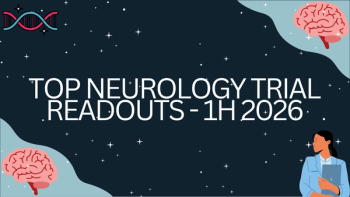
Apomorphine Infusion Devices to Manage OFF Episodes in PD
Experts in movement disorders explore the potential role of an apomorphine infusion device in the Parkinson Disease treatment landscape for patients suffering from OFF episodes.
Episodes in this series

Stuart Isaacson, MD: These intermediate device aided therapies apply to use before the advanced surgical device aided therapies or DBS [deep brain stimulation]. Indeed, 1 or 2 of these subcutaneous infusions are still in phase 3 programs. One who had an NDA had recently been submitted for and this is the apomorphine infusion device that hopefully will be approved by the FDA based on the accepted NDA for the continuous treatment of motor fluctuations and patients who have OFF episodes. Once approved where would you place this in the PD [Parkinson Disease] treatment landscape? How soon would you use it? How many different classes of medications would you try in a rational polypharmacy? How many on demand therapies would you try, or would you start this sooner and see what being in a so called continuous or even a good on throughout the day might be?
Rajesh Pahwa, MD: Personally I look at it as 2 things. The first thing is I'm not going to use it before levodopa. They would require levodopa. They should at least have a trial of 1, maybe 2 adjunctive therapies before I would consider using something like an infusion therapy. The other big thing is talking to our patients. We have more options available. We have patients who are going to say I would rather take another once-a-day pill because again you ought to remember, managing a pump is not going to be the easiest thing in the world. These are pumps that may have mechanical issues. They must have needles put subcutaneously. Even though it's a simple way to do all these things it is more difficult than taking a pill and putting that in the mouth, it's a very important conversation we'll have to have with the patients. It is going to end up that our patients would be on levodopa, have tried 2, 3, maybe 4 kinds of adjunctive therapies, either failed them or continue to have OFF time in spite of that, are going to be more willing to try the pump therapies rather than the patient who's just on levodopa having OFF time saying OK I'm not going to try anything else let's go try some infusion therapy.
Stuart Isaacson, MD: Certain types of patients perhaps, Bob that you might think about such a continuous infusion device sooner?
Robert A. Hauser, MD, MBA: These are patients who are mostly sort of contemplating surgery who've tried a number of mediations and are not adequately controlled with a reasonable number of medications and that's what Raj was saying. These are patients who are generally younger, who are active and trying to maintain that kind of high function that I talked about, who find that when they're not at that high function that it's causing them some difficulty or trouble. Those are going to be the ones that are most interested because A, they want that high function and B they can handle the vagaries of the system and the potential complications that'll need to be taken care of that do come along with it.
Stuart Isaacson, MD: Laxman, patients that you are seeing and you're trying these on demands and you're double checking it and you're trying different enzymatic inhibitors and direct centrally acting dopamine and non-dopamine medications; where are you going to think about using such a device that can infuse a medication such as apomorphine?
Laxman Bahroo, DO: Probably several different types of patients. I agree with Bob which is these are the patients I call pre-surgical patients. These are the patients that are pre-surgical patients, those that are contemplating surgery. Maybe they don't want to contemplate surgery, but they have no choice to contemplate surgery. This may be an option that would fill that gap, that unmet need that we were speaking of. That's the easiest issue with those patients. Then there's patients that are post-surgical. They've had deep brain simulation surgery done 6, 7, 8 years ago. These are patients that are younger. They had Parkinson's for 10, 15 years. They're now reaching their mid 60s now but even though they've had DBS since the early 2000s, they're fluctuating. And they may be those patients that we may go to with infusion because they're already on the levodopa, and they've added back adjunct in some of the newer and some of the newer adjuncts, so that's the second population. Those are smaller populations I would say in that sense. Those 2 populations come to mind. Then there's the individuals that are using a lot of on-demand. They're using on-demand 3, 4, 5 times a day. Many of these patients don't use on demands as much as they should, or as many OFF episodes as they have. Studies have shown even though on-demands can be used up to 5 times a day, most individuals are using it about twice on average. There are patients that are leaving OFF episodes untreated, and some that are treating every OFF episode are using it 4 or 5 times a days. If you're using that many on-demand therapy options plus the oral levodopa plus the adjunct, maybe this is the time to be able to smoothen that out and try to put you on one therapy and be able to lower some of the doses of all these other things getting rid of the on demand therapies and moving to a lower dose. That's my third population. That's probably a bigger population than the first and second one.
Stuart Isaacson, MD: Laxman talks maybe about the late intermediate and Bob talks about a mid-intermediate. Is there a role for an infusion device in early intermediate per se? Are patients who are constantly adding new agents every 3 to 6 months over several years, they still suffer from offs. Is offs necessary if you can improve off with a continuous therapy, would you ever begin it earlier, sooner?
Rajesh Pahwa, MD: First of all like we talked about, this is intermediate. This is before we would recommend surgery on our patients. It is that gap between adjunctive therapy and surgical therapy that we are looking at, but could we technically use it earlier in the disease course so that the patient has mild fluctuations throughout? Yes, we definitely could. The challenge is we need some data to say instead of using my second or third adjunctive therapy, I should start infusion earlier that I would have easier control, better control of my patient. But no, I don't think it is not possible to use it as an early adjunctive therapy in our patients. Yes, our data right now that we have available even let's say for apomorphine, is that they have tried 1 adjunctive therapy, not 2, not 3, not 4. But again, the biggest challenge is going to be how many adjunctive therapies a patient has tried before we can use this drug. And like I said to me if a patient is on levodopa has tried 1 or 2 and continues to have OFF time, it's a dialogue we need to have with the patient. Do you want to add a third adjunct therapy, or do you want to try this infusion therapy? If my patient is someone who knows I have tried 2 again and just like you said, going for another month, adding another 20 minutes, 30 minutes in the say might say let's try this infusion, and I don't have to take the pills. The other advantage is adding infusion therapies, we are going to be cutting back the number of pills they are taking. Whether they are taking eight levodopa pills a day, or whether they're taking three adjunctive therapies a day, we'll be able to cut those down too. When we talk about intermediate, 1, we are talking patients who are on levodopa, having OFF time, and have tried at least a couple of adjunctive therapies, then our option is do you want to add more adjunctive therapies? Or do you go to this intermediate therapy that's an infusion therapy does not mean that a patient has to try all the adjunctive therapies. Similarly, it doesn't have to be a patient who's ready for surgery needs this infusion therapy, it could be earlier intermediate, not only advanced intermediate.
Stuart Isaacson, MD: Maybe along the lines of one of one presynaptic levodopa COMT inhibitor, one centrally acting, one non-dopaminergic and one on demand. You still off that impacts frequency, severity, duration, it impacts daily activities. You can think about these sooner. We'll have to come up with some type of rubric, or algorithm, or consensus to understand these new options. How about other clinical trials that are going on, other emerging data? What are you excited about, Bob?
Robert A. Hauser, MD, MBA: I was just going to say before we go on that I'm not sure that you have to have tried X number of other therapies or each category. I think it's that you must have enough of an issue, and you have to be highly motivated to want to try the infusion and to deal with it. Under those circumstances, I don't think you need to have tried X number of certain ones. What else are we excited about?
Stuart Isaacson, MD: Let me interrupt you for a second, Bob. You bring up this idea of motivated. How much of a role do you play in motivating your patients to think about new therapies, and to use therapy?
Robert A. Hauser, MD, MBA: If a clinician can be enthusiastic about a treatment, but one needs to be very careful because ultimately the patient needs to be motivated, because it's the patient that's going to spend the bulk of the effort and have to expend that effort in dealing with the problems and complications and day to day burden. If a clinician is overly enthusiastic, that's not going to sustain the patient long term. It's better to take a more balanced approach and let the patient become enthusiastic if they think if it's that the problem and their lifestyle, that would be my thought about that.
Transcript Edited for Clarity
Newsletter
Keep your finger on the pulse of neurology—subscribe to NeurologyLive for expert interviews, new data, and breakthrough treatment updates.































